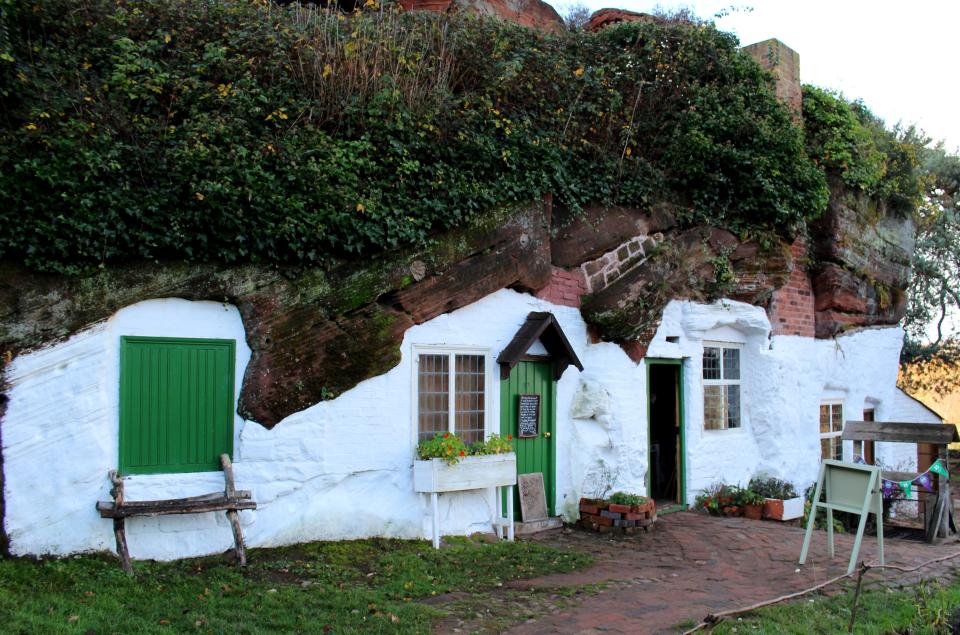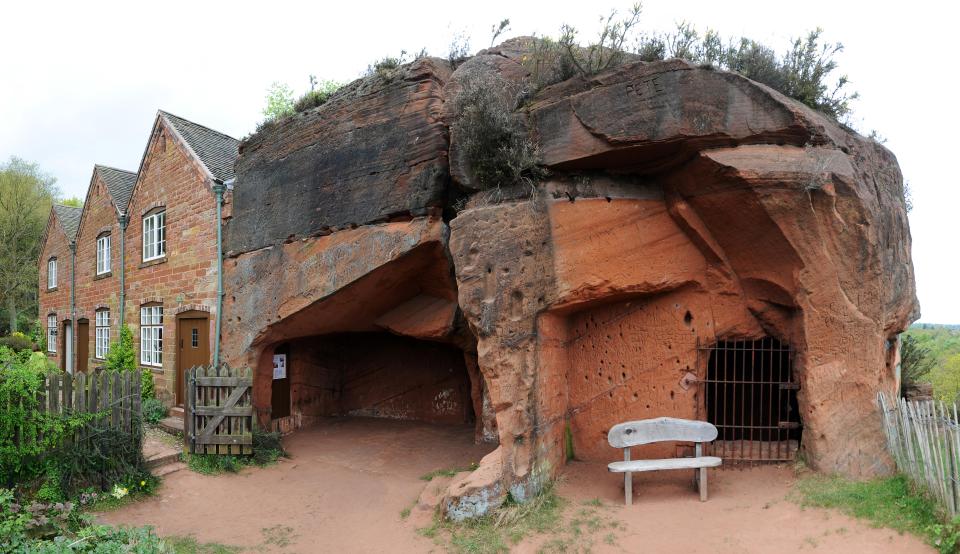WHILE going back in time might not be possible, there are places in the UK where it feels like you’ve just done exactly that.
Places like museums and well-preserved towns offer a brief window into how the country would’ve been at certain stages in its history.
But certain buildings, like the Holy Austin Rock Houses in the West Midlands, offer a much more immersive experience altogether.
Located in Kinver Edge, a high heath and woodland on the border between Staffordshire and Worcestershire, the Holy Austin Rock Houses are where England‘s last cave dwellers are said to have lived.
Made from sandstone caves, generations of English families lived in the caves from the 18th century right up until the 1960s.
According to the National Trust, the earliest record of people living in the quirky rock houses was in 1777 – although it’s likely to have been much earlier.
During this time, Joseph Heely took refuge from a storm and was given shelter by a “clean and decent family”.
They had water from the well and later gas, but no electricity and sanitation was by earth closets.
Rooms were larger and ceilings higher than in the nearby cottages, and an 1861 census lists 11 families living there.
Claire Hale, from the National Trust, told the BBC: “Possibly even thousands of years before that as we have an Iron Age hill fort up at the top and potentially people could have taken shelter in them all that way back”.
The rock houses have been owned by the National Trust since 1917, with restoration work taking place in parts of the cave in the 1990s.
Homes at Holy Austin were restored in 1993 to show what life in the rock houses was like in the early 20th century.
The original home of Mr and Mrs Fletcher, at the lower level, was reconstructed based on photographs and memories.
Visitors can see furniture, bedding, furnishings and ornaments, just as they would’ve been when the houses were lived in.
The cave houses opened to visitors in 1997.
While Holy Austin was restored in the 1990s, Nanny’s Rock and Vale’s Rock weren’t renovated.
Despite this, visitors to the rock houses can still see Vale’s Rock and Nanny’s Rock on the walking trail.
Visitors are allowed to climb into Nanny’s Rock and wander around the five empty rooms.
Entry into Kinver Edge today costs £7.50 for a full-paying adult and £3.75 for kids.
The rock houses have been praised by visitors, with a 4.5/5 star rating from hundreds of reviews on TripAdvisor.
One person wrote: “I went with a friend who lives nearby, I’d never heard of the Rock Houses. What an amazing place.
“The Volunteers who were there, especially Gillian, were so knowledgeable and super friendly.”
Another person added: “A very interesting insight into how some people lived in the past, right up to the 1950s”.
A third person wrote: “One of the most interesting National Trust places we have visited in a long time and is obviously very unique and authentically restored.”
On-site there’s also a tearoom where hot and cold drinks are served as well as light lunches and cakes.
A second-hand bookshop is also located behind the tea room.
The heathland of Kinver Edge is also home to dramatic countryside views, walking trails and woodlands.
The rock houses are a 15 minute walk away from Kinver Village.
Kinver Village is a 50-minute drive from Birmingham, and it’s just a 20-minute drive from Kidderminster.
Three other caves to visit in the UK
HERE are three other caves Brits can visit in the UK.
Gaping Gill, Yorkshire
For anyone who might be afraid of heights or the dark or both, the idea of being lowered from almost 400ft up through a waterfall into a cave might seem like a daunting prospect. However, others have been blown away by their trip down Gaping Gill in Yorkshire, where twice every year, visitors can be lowered into the cavern on a winch.
Painsill, Surrey
Painsill in Surrey is home to Europe’s largest man made crystal grotto. The grotto is described as a “highlight of any day out at Painshill” where “children are captivated and adults stand in awe of the incredible man-made feature”.
Carnglaze Caverns, Cornwall
The Carnglaze Caverns are nestled 60m below ground. They were originally created by a group of local miners over 300 years ago, but have since opened as a tourist attraction.
Meanwhile, this historic UK town is home to the largest cherry tree orchard in the world.
And this Victorian train station in the UK has been named one of the best in Europe.















